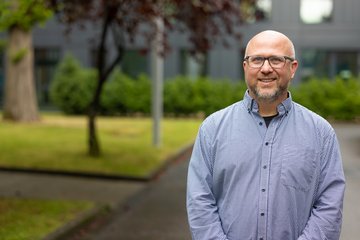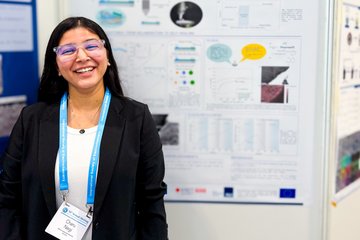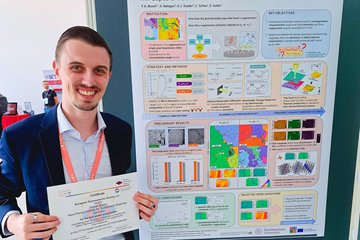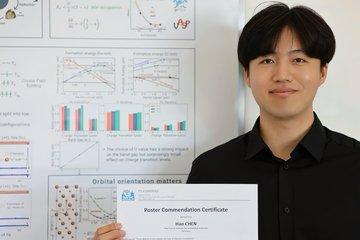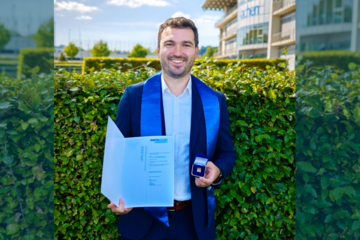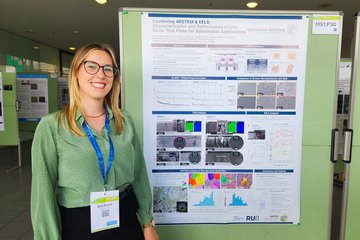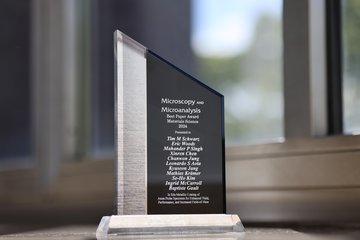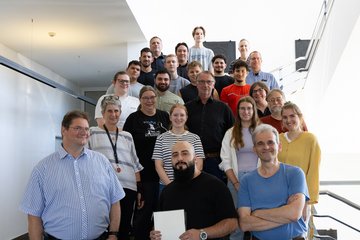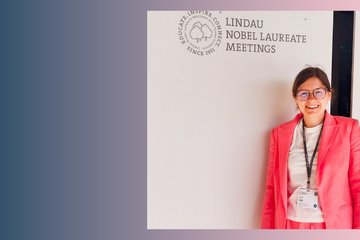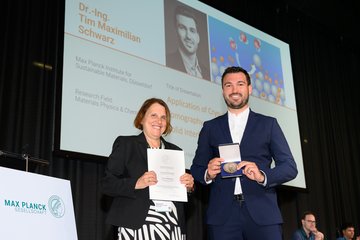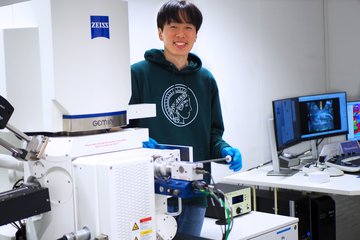All genres
41.
Journal Article
Difference in linear polarization of biaxially strained InxGa1-xN alloys on nonpolar a-plane and m-plane GaN. Physical Review B 92 (24), 245202 (2015)
42.
Journal Article
Role of biaxial strain and microscopic ordering for structural and electronic properties of InxGa1-xN. Physical Review B 92 (8), 085204, pp. 5204 - 5210 (2015)
43.
Journal Article
Ordering phenomena and formation of nanostructures in InxGa1−xN layers coherently grown on GaN(0001). Physical Review B 90 (24), 245301 (2014)
44.
Journal Article
A generalized plane-wave formulation of k · p formalism and continuum-elasticity approach to elastic and electronic properties of semiconductor nanostructures. Computational Materials Science 95, pp. 280 - 287 (2014)
45.
Journal Article
Negatively charged ions on Mg(0001) surfaces: Appearance and origin of attractive adsorbate-adsorbate interactions. Physical Review Letters 113 (13), 136102 (2014)
46.
Journal Article
First-principles calculations for point defects in solids. Reviews of Modern Physics 86 (1), 253 (2014)
47.
Journal Article
Interface structure and chemistry of GaN on Ge(111). Physical Review Letters 111 (25), 256101 (2013)
48.
Journal Article
Dangling-bond defect in a-Si:H: Characterization of network and strain effects by first-principles calculation of the EPR parameters. Physical Review B 87 (12), 125308, pp. 1 - 7 (2013)
49.
Journal Article
The dangling-bond defect in amorphous silicon: Statistical random versus kinetically driven defect geometries. Journal of Non-Crystalline Solids 358 (17), pp. 2063 - 2066 (2012)
50.
Journal Article
A flexible, plane-wave based multiband k . p model. Optical and Quantum Electronics 44 (3-5), pp. 183 - 188 (2012)
51.
Journal Article
Ab initio EPR parameters for dangling-bond defect complexes in silicon: Effect of Jahn-Teller distortion. Physical Review B 85 (19), 195202, pp. 1 - 8 (2012)
52.
Journal Article
Combined multifrequency EPR and DFT study of dangling bonds in a-Si:H. Physical Review B 84, 245203, pp. 1 - 10 (2011)
53.
Journal Article
Quasiparticle band offsets of semiconductor heterojunctions from a generalized marker method. Physical Review B 84 (19), 193304, pp. 1 - 4 (2011)
54.
Journal Article
Construction and performance of fully numerical optimum atomic basis sets. Physical Review B 84 (8), 085101, pp. 1 - 11 (2011)
55.
Journal Article
Ab initio study of electron paramagnetic resonance hyperfine structure of the silicon dangling bond: Role of the local environment. Physical Review B 83 (14), 144110, pp. 1 - 8 (2011)
56.
Journal Article
The object-oriented DFT program library S/PHI/nX. Computer Physics Communications 182 (3), pp. 543 - 554 (2011)
57.
Journal Article
Native and hydrogen-containing point defects in Mg3N2: A density functional theory study. Physical Review B 81, 224109, pp. 1 - 10 (2010)
58.
Journal Article
Plane-wave implementation of the real-space k.p formalism and continuum elasticity theory. Computer Physics Communications 181 (4), pp. 765 - 771 (2010)
59.
Journal Article
Direct minimization technique for metals in density-functional theory. Physical Review B 79, 241103(R), pp. 1 - 4 (2009)
60.
Journal Article
Fully ab initio finite-size corrections for charged defect supercell calculations. Physical Review Letters 102 (1), 016402 (2009)
